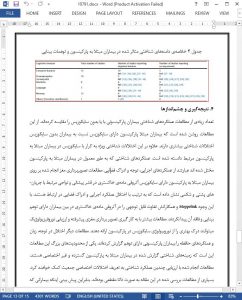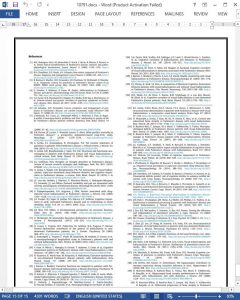Abstract
Psychosis is one of the debilitating non-motor symptoms (NMS) of Parkinson's disease (PD). Cognitive impairment is considered to be a risk factor for emergence of psychosis in PD. Early detection of relevant cognitive impairment may serve as a predictor for development of psychosis, with implications for prevention and early intervention. However, the exact pattern of cognitive impairment associated with psychosis is not clear. In this article, we aim to critically review the literature on case-control studies in PD patients with and without psychosis in order to understand the pattern of cognitive impairment in those with psychosis. Majority of studies conducted till date have focused on executive and visuospatial functions. Despite some inconsistencies, most of the studies found significant impairment in these domains in PD patients with psychosis compared to those without psychosis. Studies assessing for other cognitive functions such as attention, language and memory in PD patients have also found worse performance in those with psychosis. Although there is enough evidence to suggest that PD patients with psychosis have poor cognitive functioning, it is unclear if these deficits are generalized or specific. The available evidence, which is primarily in the form of cross-sectional studies assessing for specific cognitive deficits, is not adequate to indicate a clear demarcating pattern of cognitive deficits, which differentiates PD patients with and without psychosis. Longitudinal studies with extensive cognitive assessment are warranted.
1. Introduction
Parkinson's disease (PD) is characterized by core motor symptoms such as tremor at rest, rigidity, bradykinesia and postural instability [1]. In addition, patients with PD may also develop several non-motor symptoms (NMS) during the course of the illness. Psychosis, depression, cognitive impairment, autonomic dysfunction, sleep disturbances and hyposmia are few of the common NMS of PD [2]. Psychosis is one of the incapacitating NMS and it may be present in one third of the patients with PD. As per the diagnostic criteria proposed by the National Institute of Neurological Disorders and Stroke (NINDS) and the National Institute of Mental Health (NIMH) work group, psychosis in a patient with PD can be diagnosed if hallucinations or illusions or delusions or false sense of passage is/are present continuously for one month or have recurrent occurrence [3].
4. Conclusion and perspectives
Multitudes of case-control studies have compared the cognitive performances of PD patients with and without psychosis. It is evident from these studies that PD patients with psychosis have significantly more cognitive impairment compared to those without psychosis. Further, certain cognitive deficits have been described to be frequently associated with psychosis in patients with PD. The cognitive functions commonly reported to be impaired in PD patients with psychosis are in the executive, attention and visuospatial domains. Neuroimaging studies on PD patients with psychosis have found grey matter atrophy in frontal cortex and regions corresponding to dorsal and visual stream, which may be etiologically related executive and visuospatial dysfunctions respectively. However, Meppelink et al. [52] did not find significant difference in grey matter volumes between patients with and without VH. More studies integrating advanced neuroimaging with neuropsychological evaluation are warranted for better understanding of the neurobiology of psychosis in PD. Other studies have reported impaired attention, language and memory functions in the hallucinating PD patients. This is one of the limitations to better defining and understanding this complex topic, as the cognitive domains, which have been reported to have impairment in patients with PD and psychosis, are broad and non-specific. Most of the studies have focused on particular cognitive functions with exclusion of others. Studies with assessment of cognitive functions across multiple domains would help in delineating the deficits, which are specific to this population.











